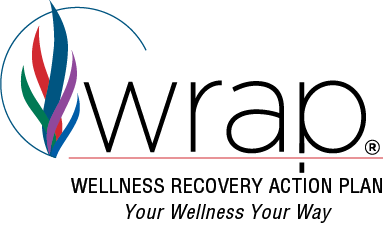The next few months may be challenging. There is colder weather (I am envying my friends in the southern hemisphere) and less daylight. We are in the midst of a raging pandemic that is expected to get worse before it gets better, with no certainty about when it might end. The need for masking and social distancing will continue. There is limited opportunity to visit face-to-face with family members and other supporters. Political uncertainty, at least in the United States, makes these very trying times. I have noticed that I am experiencing early warning signs that I have not experienced for many, many years—not since I began using WRAP intensively. I have also noticed some stressors, early warning signs, and signs that things are breaking down that I have not experienced before. Perhaps this also speaks to your experience.
My strategy for getting successfully through these times without a recurrence of my mental health distress is to update my WRAP, especially my list of wellness tools, to make sure it is effective and carries me safely through these hard times. My list of wellness tools has served me well in the years since a small group of people who were having mental health difficulties developed WRAP back in 1997. If I am having trouble sleeping, I think of all the wellness tools I used that day. My list contains common things such as going for a walk, calling a supporter, eating three meals a day, and taking a shower. Some that may be more idiosyncratic to me include visiting the beavers that live near my house, making patches for a quilt that I have been working on for a long time, and playing some old-time tunes on the piano.
As I thought more and more about my wellness tools, I realized that, to negotiate my way through these times, I need some heavy-duty wellness tools. I have been pondering this for weeks now, and it is helping me to think about this need even more as I write to you. What have I figured out?
Support, getting it or giving it, is a key heavy-duty wellness tool for me. I miss the gatherings and the groups. I miss the hugs a lot. In these times, I have to schedule and make special arrangements to be sure something happens because, if I don’t, it won’t happen. I have several very close friends and we have a Zoom call every week. It’s a mini-support group and it makes a big difference for me. I often try to join a Zoom that happens twice a week with people in my community. I have arranged for calls every other week with an old friend who lives in Arizona. In the evening, I try to reach at least one family member, usually more, every day. I miss them so much now that we can’t visit in person. I find it is especially important to keep in touch with family members and friends who have experienced loss during these times, or who are having a very hard time. It doesn’t make me feel better, but it feels right, and that is important to me. I have a friend who lives alone. She makes it a point to call people, especially people she cares about and hasn’t seen in a long time. These are all heavy-duty wellness tools.
For years I have talked about Exchange Listening—two people sharing for equal amounts of time without interruption. I know this would be helpful to me now. I haven’t used it in a long time, but I am planning to resurrect it. It is described in detail in my books.
I have also found that I need to update my meditation practice. I have tried something new called tapping. You may want to check it out. There are also good meditation apps and many, many sites that have free guided meditations. I am finding that I need guided meditations these days as they help me concentrate. I have learned that mindfulness, being fully present, and appreciating each moment is, for me, a heavy-duty wellness tool.
Like most people, I get into the habit of mindlessness—doing things, seeing things, hearing things, and hardly noticing. It gives me a boost when I spend time focusing on each little and big thing I do, where I am going, what I am reading, and what someone else is doing. It especially helps me with old eating patterns that don’t serve me in this time. I pay close attention to what I am eating—the taste, the smell, the texture, the feeling of the food in my mouth.
A long, rigorous hike in a beautiful forest gets my endorphins going, as does being in a beautiful natural area. Usually I combine the two, hiking to a beautiful natural area. The “high” I get from that activity stays with me for several days. Unfortunately, this option is not available to everyone either due to transportation issues or lack of options. If I can’t get outside, I try to do some exercise inside. I have an exercise bike that I ride. I also count cleaning, vacuuming, or scrubbing as exercise, and it helps me feel better.
I used to love playing the piano, but in recent years my piano has been neglected. I have now dusted off the bench and played a few tunes and realized how easy it is to get lost in the music, even with my minimal skills. There is lots of music I love to listen to that makes me feel really good, but again, I haven’t done much of that lately. I could also spend hours and hours listening to good music. It is at my fingertips. And now it is on my list of wellness tools in the “heavy-duty” section. So is sketching. I love to sketch, but again, I haven’t done it in a long time. Perhaps you have some activities that you used to enjoy—that you might enjoy again—that would likely help you get through this hard time.
For years I went to an exercise class a couple of times a week at our local senior center. Now that is closed. Lately I have been noticing stiffness and soreness when I am moving. To deal with that, I started attending a Zoom exercise class with local people. At my age, I can’t let that slip. I know it is easier for me if I am guided through the exercises by an instructor, especially if there are people in the class that I know. I am sure there are exercise classes on TV or on a CD that would work for me, but I find that, without the routine of a specific time and place, I don’t do it.
My grandson is in his 20s and his immune system is compromised. He has to be very, very careful. He is only going out early in the morning to exercise. He has decided to use this time to enroll in an online college program. He has already earned enough credits for his associate’s degree. He is also playing games online with friends who he can’t get together with and taking online cello lessons. These are heavy-duty wellness tools for him.
I will be adding my heavy-duty wellness tools to the list of wellness tools in the front of my WRAP. If they are already there, I will be putting an asterisk beside them so they stand out, and perhaps write a bit more about them, reminders of what works best. Then I will go through each section of my WRAP: my daily plan, stressors, early warning signs, when things are breaking down, my crisis plan—which I haven’t used in a long time because I follow WRAP and have so many tools to get me through hard times—and my post-crisis plan, inserting these tools where they fit. Some of them, like getting support, I include in every section. I always need connection with people. Others I will be using from time to time.
We can all use our creativity and increase our own list of wellness tools. If I have a hard time figuring out enough heavy-duty wellness tools, I am going to refer to a book I wrote a few years ago, WRAP for Life. It is full of wellness tool ideas. I am also asking family members and friends for ideas.
I wish you all good health and happiness through this hard, hard time.

Mary Ellen Copeland, PhD, developed Wellness Recovery Action Plan (WRAP) with a group of people with lived experience who were attending a mental health recovery workshop in 1997. She is the original author of the WRAP Red Book, as well as dozens of other WRAP books and materials. She has dedicated the last 30 years of her life to learning from people who have mental health issues; discovering the simple, safe, non-invasive ways they get well, stay well, and move forward in their lives; and then sharing what she has learned with others through keynote addresses, trainings, and the development of books, curriculums, and other resources. Now that she is retired, and that, as she intended, others are continuing to share what she has learned, she continues to learn from those who have mental health issues and those who support them. She is a frequent contributor to this site.






